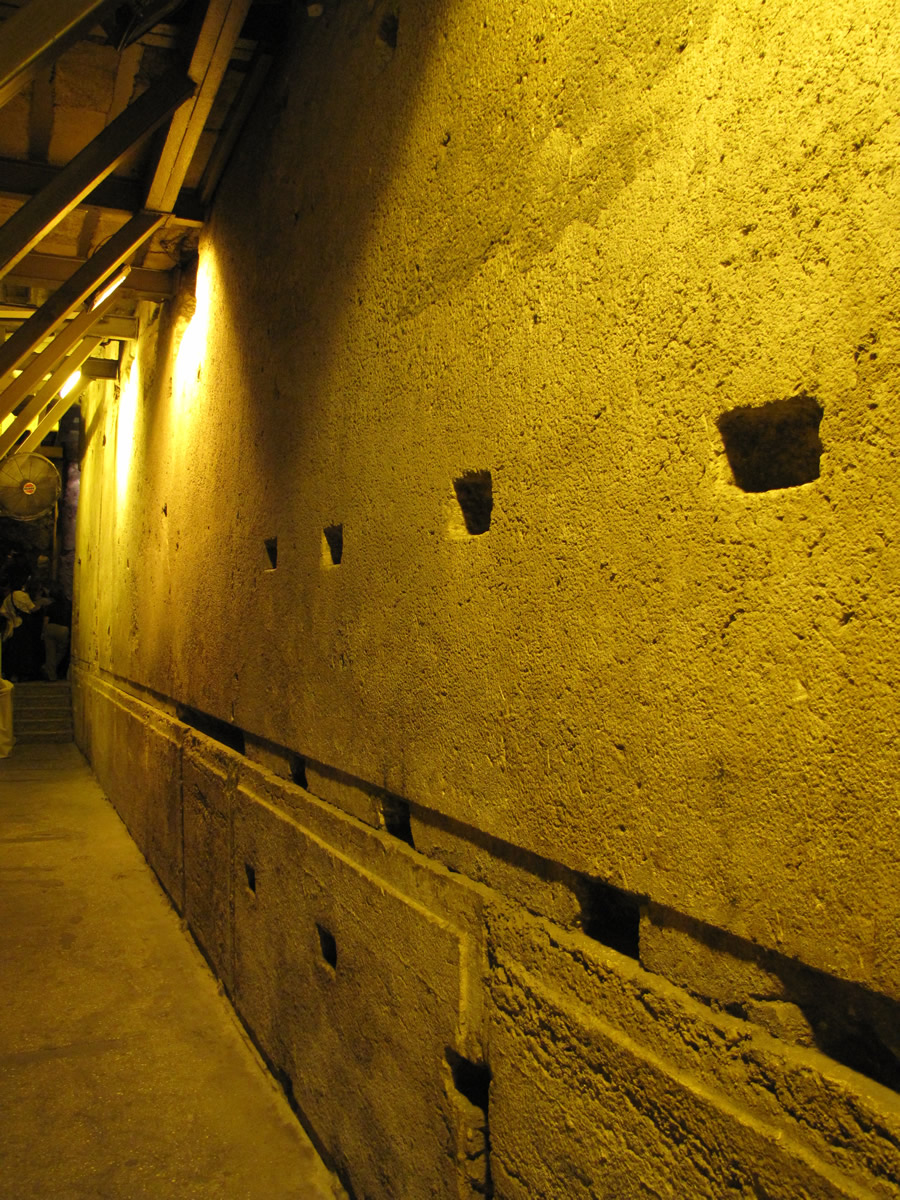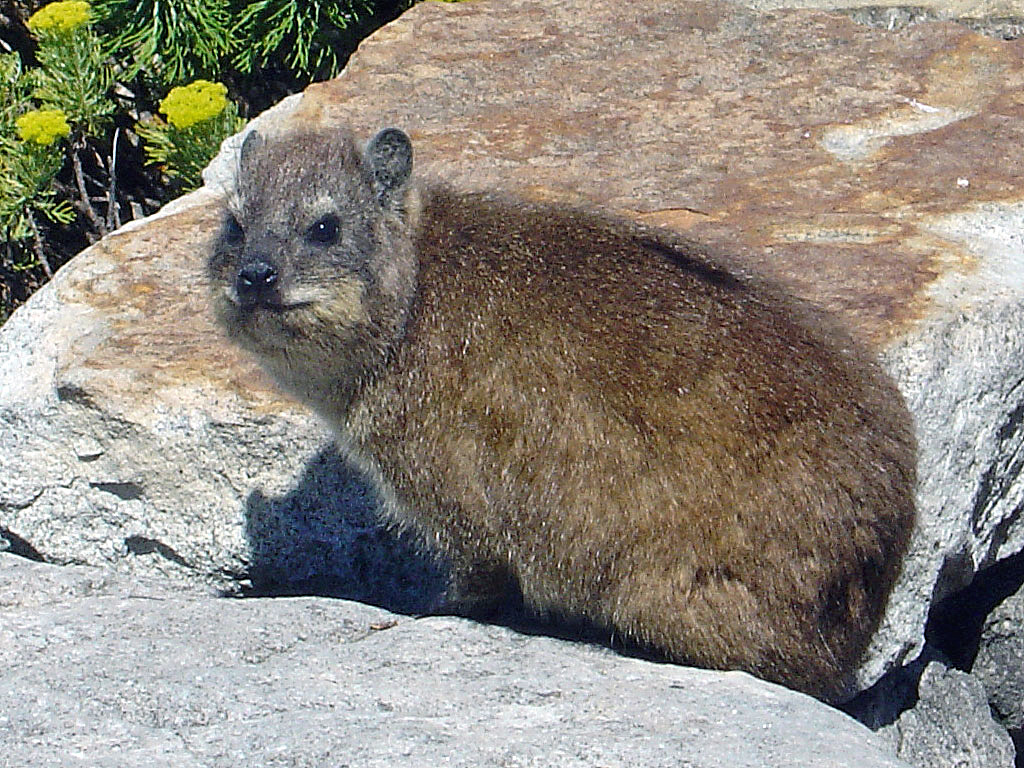 |
The Dead Sea from our balcony the next morning.
Four people from our group are in the water at 6:45 am. High 35c today. |
 |
| A relaxed morning. After yet another great breakfast, we left the hotel at 10 am |
In our travels, it is sometimes necessary to make a left turn, but
since no left turns allowed at some places, we turn right and make a U turn.
Quite entertaining.
Today we cross the border back into the promised land of Israel, then on to Jerusalem.
All went well at the Jordan border, but at the Israel border Sashi got hauled aside. She has a pacemaker, but no card. It took a while for our suitcases. We waited and we walked...finally 1.5 hrs later we were on our way. Five times we showed our passports. Doron was waiting for us at the Israel crossing. We were all glad to see him.
 |
Dates. All generic copies of each other.In the Bible,
God promises the Jewish people a land flowing with milk and honey.
It appears God has delivered on that promise. Despite the heat, humidity and limited resources,
Israel is considered leaders in the production of milk in the world, while
most believe during biblical times, honey probably came from date trees |
 |
| We are at the lowest point on earth. 1000 feet below sea level, then driving to 800 above. |
 |
Dead Sea. The point we could see from our hotel last night in Jordan.
The lighter blue color is fresh water is coming in from En Gedi. |
 |
| Picture of the snaky road ahead of us. |
 |
Nubian Ibex Big Horn at the Dead Sea.
|
 |
| Salt accumulation can be seen on the shores of the Dead Sea. |
 |
| Masada is an ancient fortification in the Southern District of Israel, on top of an isolated rock plateau on the eastern edge of the Judaean Desert, overlooking the Dead Sea. |
 |
| To the top. |
 |
View while ascending by cable-car.
We had lunch at the top. There were many different restaurants but we picked McDonalds. The line up was the shortest. |
 |
| At the edge of the Judean Desert, on a rocky plateau overlooking the Dead Sea, lies the excavated ruin of a royal citadel. It was the last stronghold held by the Jewish Zealots who refused to submit to Roman occupation. When they could hold out no longer, Masada became the backdrop for one of the most dramatic scenes in Jewish history. Defeated, they resorted to mass suicide rather than being captured. |
 |
| Searching for pieces of broken urns that were scattered here. |
 |
| Crazy hot today, even this high up. |
 |
| Ballista Balls. Neil is contemplating! |
 |
| The Synagogue |
 |
| Cistern. In order to provide water in middle of a desert where rainwater is woefully scarce – barely one inch of rain falls on an annual basis! – Herod built an intricate system of aqueducts to drain every drop of rainwater from the nearby wadis (a stream that is usually dry unless it has just rained) into the Masada cisterns. |
 |
Here we can see the largest of the Roman camps. In front of the camp the containment wall can be seen.
The Romans had 8 camps positioned around Masada.
The wall encircling Masada was almost 2 miles long
|
|
 |
This is a retouched picture, which means that it has been digitally altered from its original version. Modifications: made from two images, one for the palace and one for the background.
On the North end of Masada Herod built a series of three palaces.
These appeared from the ground to be hanging palaces. Herod used them to impress and intimidate his guests. They were also designed to be the last line of defense even after the mountain of Masada was taken.
|
 |
All three levels where the palaces stood can be seen in this picture.
|
 |
| Mosaic pattern in bath house. |
 |
| Bath |
 |
Steam room.
Most of Masada's actual buildings are very ruinous, though many have been reconstructed and a black line around the buildings shows the height the walls reached prior to reconstruction. |
 |
The grey haze between the trees are locusts.
Doron stated he had never seen such swarms. |
 |
| Hyrax...The hyraxes are any of four species of fairly small, thickset, herbivorous mammals in the order Hyracoidea. About the size of a domestic cat they are well-furred, with rounded bodies and a stumpy tail. They are native to Africa and the Middle East. |
 |
| Read from Job 39. Locusts |
 |
Mango Trees.
Israel has 4200 acres of mango orchards, and produces 42,000 mangoes per year. |
 |
The Bedouin population is ranked at the bottom of the social economic ladder in Israel. Unemployment rates among them are relatively high in comparison to the Israeli society, and their education level is also low in comparison to other minorities.
The state of Bedouins living in unrecognized settlements is even worse. |
 |
Psalm 121 was read.
I lift up my eyes to the mountains,
where does my help come from?
My help comes from the Lord,
the Maker of heaven and earth. |
 |
As the bus entered the city of Jerusalem. Doron played this song, and we sang along.
What a heart warming and emotional way to enter the city.
Jerusalem! Jerusalem!
Lift up your gates and sing,
Hosanna in the highest!
Hosanna to your King!
|
 |
We went to the top of Mt. Scopus to see Jerusalem.
and repeated after Doron a prayer in Hebrew.
This beautiful pink flowering tree is called: Israeli Redbud, nicknamed "Judas Tree" |
 |
| View of Jerusalem |
 |
Next stop: Dung Gate is the main entrance to the western (wailing) wall.
here we shared bagels and hyssop together before walking to the Western Wall.
The wall of the city was moved here. Every stone is different. |
 |
| Kapers just starting to come to life. |
 |
Bread dipped in hyssop.
Breaking bread (as Doron called it) at the gate entry. |
 |
| Walter and Barbara |
 |
We had to go through security to enter.
Men had to enter on the left, women on the right. That is what we did. |
 |
Inside the city, looking at the Wailing Wall, aka Western Wall.
The vocal point of Judaism. The wall is the closest to the Holy of Holies. |
 |
The area is divided to 4 sections: a large open zone on the western side, a small section for women on the south side of the wall (there is segregation due to religious requirements), a larger section of the wall in the center for men, and a covered place in the northern side..
Deep bowing - The Jewish people who worship at the wailing wall do so with deep bowing. This manifestation is usually seen in intercessors.
The bowed head is a symbol of humility.
Kneeling is a sign of servitude.
Closed eyes: to shut out distractions.
Full body swaying: Originated at a time when many people read in sequence from a single handwritten text. Each person was compelled to bend down in order to read a passage and then to straighten himself up again. This resulted in continual bending forward and moving backward, the book being on the ground.
By the time printed prayer books were plentiful, the practice of bobbing was ingrained. |
 |
| Crevices were full of small notes. |
 |
| Marcel can be seen in the center. |
 |
| All the men had to wear a Yamaka or Kippah out of respect. |
 |
| The Western Wall Tunnels is an underground tunnel exposing the full length of the Western Wall. The tunnel is adjacent to the Western Wall and is located under buildings of the Old City of Jerusalem. While the open-air portion of the Western Wall is approximately 60 meters (200 ft) long, the majority of its original length is hidden underground. The tunnel allows access to an additional 485 meters (1,591 ft) of the wall. |
 |
We toured the ancient Herodian street at a depth of 50 feet below ground level,
along the length of the Western wall. |
 |
The Master Course Stone:
This stone is 44 feet long, 11.5 feet high, and 15 feet wide. It is estimated to weigh 570-630 tons. This stone is the master course.
It was used to stabilize the smaller stones under it. It sits 20 feet above the Herodian street level and 33 feet above the bedrock. They have stood unmoved for 2,000 years. |
 |
I did not care for the underground tunnel, but glad to have experienced it. Marcel held on to me most of the time. Extremely narrow. So happy to be above ground again.
On the bus at 7:30 to the Leonardo Hotel in Jerusalem. |
































































You were fortunate to get such a good view of a hyrax. We saw one fleetingly, but never managed to get a good look at it. Also an ibex! Wow! But no cats...? Israel and Jordan both abound in cats which were specially brought in. We saw them everywhere, even in Petra. Or are they not blogworthy?
ReplyDeleteThere are many million stray cats in Israel. They were everywhere.
DeleteAlida, you have done a magnificent job of capturing the essence of all that we saw and heard in Israel these past 2 weeks! Your comments are especially noteworthy! Someone mentioned that you are going to be preparing a "booklet" using the photos & explanations .... is it possible for Sue Butson and I to get copies? GRETCHEN
ReplyDeleteYes, you certainly may have a copy. I'm working hard to finish the blog before I forget everything. lol.
DeleteWhat an exciting place to be, especially this time of the year. Thanks so much for the visual tour - makes me yearn to visit the Holy Land some day. Stay safe - Tony J.
ReplyDelete